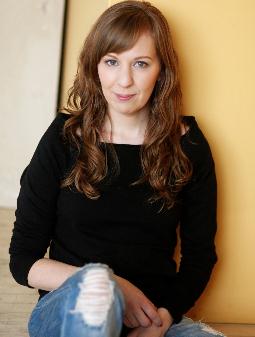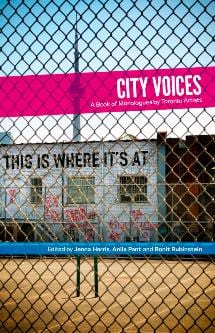When Jenna Harris set out to create a new anthology of stories about Toronto, she had no idea the response would be so resoundingly queer.
Harris says that when she put out the initial call for submissions she didn’t know what to expect, but “City Voices has turned out to have an incredibly strong queer presence, both in the number of queer writers who have monologues in the book and also in terms of the themes explored by the characters speaking within its pages.”
Harris, a Toronto resident of five years and a Buddies in Bad Times employee for almost as long, was inspired by the network of artists and writers she’d met in the city. “And like me,” she says, “many of these artists were struggling to be heard.”
With the help of fellow artists Ronit Rubinstein and Anila Pant, Harris solidified the guidelines for City Voices, an anthology of monologues by artists and writers who live or have lived in Toronto. “And now, with 28 writers and 29 monologues and a foreword by MP Olivia Chow, we couldn’t be more thrilled with how it’s all turned out, and we’re so excited to get these amazing pieces out there to the public.”
Like Toronto, City Voices is populated by a diversity of writers. Aside from Harris and Pant, other queer-identified writers include JP Larocque, Hope Thompson, Jordan Tannahill, Jazz Kamal (aka MC Jazz) and emerging theatre creator and trans-identified writer Evan Vipond.
Vipond’s piece, “Period,” focuses on the disconnection a trans woman feels when, as an eight-year-old boy, she learns she will never menstruate. “It is important for this story to be included in City Voices because trans experiences and voices are often marginalized,” he explains. “Moreover, if or when trans voices are represented, they are often carefully constructed to reflect normative gender identities and reinforce the sex-equals-gender binary.”
While Harris says it was never intended to be a queer-centred project, City Voices embraces its connection to the community, one of the reasons the anthology’s launch party will be held at Buddies in Bad Times Theatre.
The evening will feature readings by some of the writers, including Vipond. “To be queer is to embrace otherness and challenge normative views and politics, not just gender and sexuality,” he says. “Sadly, there is an increasing tendency to normalize the gay and lesbian community. Homonormativity erases difference, rather than embracing it. To truly be reflective of the city, a cross-section of experiences and voices are needed, which is exactly what City Voices does. Queer people are everywhere —especially in Toronto!”



 Why you can trust Xtra
Why you can trust Xtra


